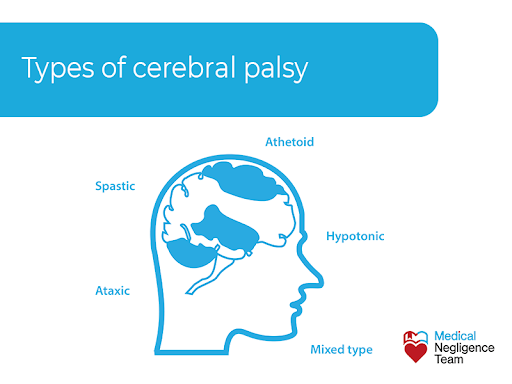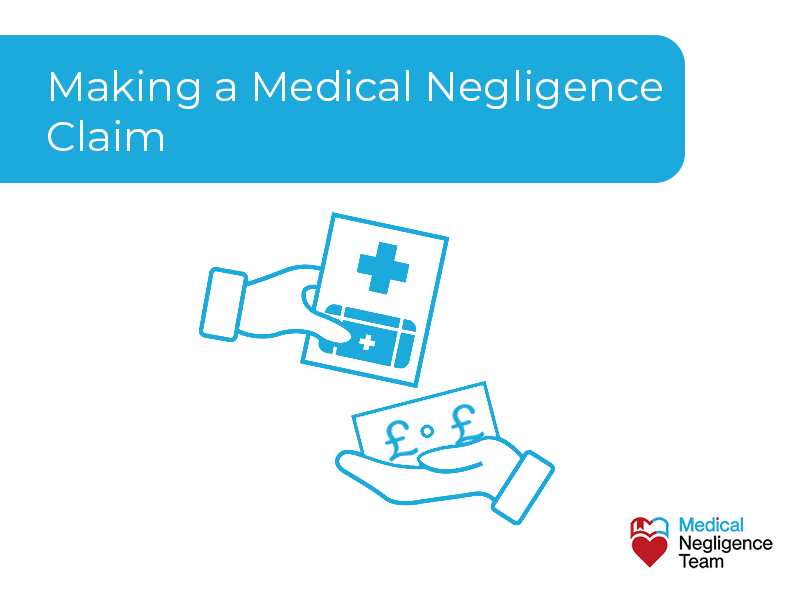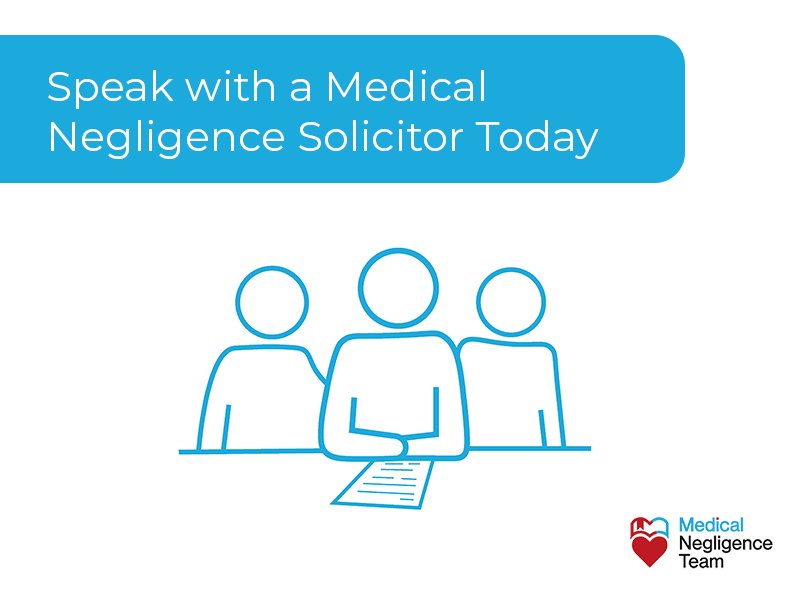Cerebral palsy claims are the most expensive form of medical negligence cases. Numerically obstetric cases make up 12% of all medical negligence claims handled by the NHS each year yet in the most recently reported year they accounted for 62% of the costs of medical negligence payouts.
There are in the region of 700 cerebral palsy births in England each year and around 8% to 10% of those will be as a result of negligence.
A severely disabled child who has a cerebral palsy claim as a result of medical negligence at birth will require round the clock private care for life. A successful cerebral palsy claim will mean that this care is paid for on an ongoing basis for the life of the disabled child for the entirety of their life.

Often a lump sum is paid for adaptations required to the home and then periodic ongoing payments are made for life to cover the cost of your ongoing care.
Medical negligence solicitors will take on your compensation claim and get you the money you deserve.
Every child should have a normal birth. When your child suffers a brain injury due to medical negligence, you can make a medical negligence claim for compensation.
The Medical Negligence Team has the legal and medical experts to win your medical negligence compensation claim.
Table of content
What is Cerebral palsy?
Cerebral palsy is a brain condition that causes difficulty in a child’s ability to move, keep their balance and maintain an upright posture.
It is a lack of ability to control the body’s muscles and will affect a person for life. Cerebral palsy affects every person differently, but the symptoms are usually the same.
A person with severe cerebral palsy may not be able to walk and will need a lifetime of close care. A mild sufferer of cerebral palsy may be able to walk unaided and require only minimal day-to-day care.
What causes Cerebral palsy?
Cerebral palsy can be caused by damage to a child’s brain, typically during birth often through a lack of oxygen causing an injury as hypoxic ischaemic encephalopathy (HIE).
The HIE will be diagnosed on an MRI and will typically show what is called a diffuse pattern of brain injury. This is because the whole of the brain will have been starved of oxygen therefore wide areas of the brain are damaged resulting in an injury such as cerebral palsy.
The lack of oxygen supplied to a baby during birth can cause Cerebral palsy. When this happens to your child, it can be medical negligence, and you can make a claim for compensation.
A medical negligence compensation claim is the only way to get the money you will need for the lifetime of care for your child.
What types of Cerebral palsy are there?
Cerebral palsy can be caused by damage to a child’s brain, typically during birth often through a lack of oxygen causing an injury as hypoxic ischaemic encephalopathy (HIE).
The HIE will be diagnosed on an MRI and will typically show what is called a diffuse pattern of brain injury. This is because the whole of the brain will have been starved of oxygen therefore wide areas of the brain are damaged resulting in an injury such as cerebral palsy.

The lack of oxygen supplied to a baby during birth can cause Cerebral palsy. When this happens to your child, it can be medical negligence, and you can make a claim for compensation.
A medical negligence compensation claim is the only way to get the money you will need for the lifetime of care for your child.
A quick look at each type of Cerebral palsy may help when you need to make a medical negligence claim.
Spastic Cerebral palsy
Spastic Cerebral palsy, while an awful term, is the most common type of the condition, with around 80% of diagnosed people having the symptoms
Spastic cerebral palsy symptoms include stiffness of the leg muscles, especially around the hips, making it difficult to walk. Other people may experience more stiffness down one side of the body, affecting the arm more than the leg muscles.
The worst type of Spastic Cerebral palsy affects the muscles in all limbs, the face and the rest of the body. A sufferer could not walk and would need full-time, round-the-clock care.
Dyskinetic cerebral palsy
Spastic Cerebral palsy, while an awful term, is the most common type of the condition, with around 80% of diagnosed people having the symptoms
Spastic cerebral palsy symptoms include stiffness of the leg muscles, especially around the hips, making it difficult to walk. Other people may experience more stiffness down one side of the body, affecting the arm more than the leg muscles.
The worst type of Spastic Cerebral palsy affects the muscles in all limbs, the face and the rest of the body. A sufferer could not walk and would need full-time, round-the-clock care.
Ataxic cerebral palsy
Ataxic Cerebral palsy is a form of the condition that affects a person’s balance and coordination. Control of the hands and feet is difficult, and you may need assistance with walking and personal care.
When you make a medical negligence claim through a clinical negligence solicitor, it is for compensation to cover the care needs and the personal injury.
Mixed cerebral palsy
Ataxic Cerebral palsy is a form of the condition that affects a person’s balance and coordination. Control of the hands and feet is difficult, and you may need assistance with walking and personal care.
When you make a medical negligence claim through a clinical negligence solicitor, it is for compensation to cover the care needs and the personal injury.
Medical negligence claims for Cerebral palsy
Medical negligence claims for Cerebral palsy take in all types of the condition. Every medical negligence case covers the needs for full-time care and the personal injury claims.
Cerebral palsy negligence
Cerebral palsy negligence is when a brain injury is caused by the medical negligence of a medical professional.
Cerebral palsy negligence usually happens at birth when the brain is starved of oxygen. It can also occur due to a misdiagnosis of an infection or poor postnatal monitoring.
Cerebral palsy caused by the lack of oxygen
Cerebral palsy caused by the lack of oxygen to the brain is a strong medical negligence claim. It happens when the midwife and/or doctor or other medical professional delays action when there is difficulty with the baby’s delivery.
When giving birth the mother will have an electronic trace known as cardiotocography, or CTG. A sensor is attached to mum and the printout will be a thin long trail of paper which tracks the unborn baby’s heart rate and contractions. The CTG is classified during labour as normal, suspicious or pathological.
As you can imagine a suspicious or pathological CTG would generally require an obstetric consultant review to decide whether the baby needs to be delivered immediately via a cesarean section or whether an instrumental delivery needs to be attempted first.
If the suspicious or pathological CTG is not acted upon in a timely fashion then a catastrophic brain injury can occur. The CTG is the baby’s main way of showing distress during the birth process along with meconium stained amniotic fluid which is another sign of fetal distress. The CTG may show that the babies heart rate is too fast or too slow, of that there are prolonged decelerations which do not match up to the expected pattern given mum’s contraction profile.
The delay in action causes a lack of oxygen getting to the brain, doing damage and leading to ongoing abnormal brain development.
When the Cerebral palsy is caused by medical negligence, you have a clinical negligence claim.
Cerebral palsy from a misdiagnosis
Cerebral palsy from a misdiagnosis of an infection or brain injury is known as acquired Cerebral palsy.
The misdiagnosis of an infection could involve meningitis or other serious brain diseases. A misdiagnosis of a brain injury leaves bleeding and swelling run unchecked.
Any delay in diagnosis in a child’s brain injury or infection can cause abnormal brain development.
Medical negligence claims for cerebral palsy
Medical negligence claims for Cerebral palsy negligence get you the compensation you deserve for the clinical negligence.
Expert medical negligence solicitors
Expert medical negligence solicitors will know what happened to your child from reading the medical records.
Always use a medical negligence lawyer approved by the Solicitors Regulation Authority.
All types of Cerebral palsy are caused by abnormal brain development. You can start a medical negligence case by following all the steps in making a Cerebral negligence claim.
The steps in making a Cerebral palsy negligence claim
The steps in making a Cerebral palsy negligence claim make faor a successful compensation case. When you follow them correctly and get all the facts and figures together, your medical negligence solicitor will do the rest.

Step 1: Seek medical advice
Seek medical advice on your child’s injuries and suffering, immediately you realise your child experienced medical negligence causing Cerebral palsy.
Step 2: Contact a specialist medical negligence solicitor
Contact a specialist medical negligence solicitor who operates on a No Win No Fee basis and tell them what went wrong. The right solicitor will look at your case, see where the problem lies, and advise if you suffered clinical negligence.
The Medical Negligence Team also have a 100% Compensation Guarantee scheme, where you get all the money awarded in a negligence claim.
You are the one who suffered medical negligence, and you should get all the money due for the suffering.
Step 3: Your medical negligence solicitor obtains your medical records
Your medical negligence solicitor obtains your medical records with your permission. By reading your records, they will confirm if they think you have a valid clinical negligence case.
The medical negligence team will know from reading your medical records if the case will result in medical negligence compensation being paid.
Step 4: The medical negligence solicitor sending a letter of claim to the negligent party
Your medical negligence solicitor obtains your medical records with your permission. By reading your records, they will confirm if they think you have a valid clinical negligence case.
The medical negligence team will know from reading your medical records if the case will result in medical negligence compensation being paid.
Step 5: Getting a response from the negligent party’s insurer
Getting a response from the negligent party’s insurer will move your compensation claim closer to a conclusion.
The insurer will either admit the medical negligence or say they intend to defend the case. Deciding to defend the case is known as ‘deny liability’ in legal terms.
If they admit liability, your clinical negligence claim can be valued.
The two parties will meet to decide on your medical treatment negligence compensation.
Your solicitor will negotiate with the negligent party and use their experience to get the compensation you deserve.
Step 6: Issuing court proceedings
Issuing court proceedings is the next step if they deny liability in your medical negligence case. Going to court happens, too, when they are not prepared to pay a fair amount for the injuries you have suffered.
Your medical negligence solicitor issues the court proceedings.
Remember that less than 1% of medical negligence cases end up in court, and very few of those cases ever make it to the courtroom.
Our Process
Our team members have a higher career win rate with a 75% success rate on NHS letters of claim, compared to an industry average of 54.5%.
Enquiry
The first step is to get in touch and tell us what went wrong. It’s free and easy. Call our 24-hour helpline: 0800 246 1122 or request a callback here.
Medical Evaluation
Once you have spoken with our team we’ll let you know how we can help. Typically the next step is to obtain your medical records for us to review.
Legal Letter
Once all your medical records have been received they will be reviewed by a medically & legally qualified member of our team. If there is evidence of medical negligence we will send a letter of claim to the negligent party outlining your medical negligence claim.
Cerebral palsy negligence claim compensation
Cerebral palsy negligence claim compensation is awarded for the two types of damages in the clinical negligence claim, General Damages and Special Damages.
General Damages
General Damages are for the pain and suffering and lack of amenity caused by the medical negligence.
Your medical negligence case for Cerebral palsy will outline all the symptoms of the condition.
Special Damages
Special Damages are for all the expenses involved in caring for your child. Cerebral palsy starts in early life, and the care costs can be for many years into the future.
You make a claim for the 24-hour care for life, adjustments to your home and all the extra needs your child will have for life.
Medical negligence lawyers
Medical negligence lawyers, such as those at the Medical Negligence Team, will know exactly what all your expenses will be.
No win No fee and 100% compensation guarantee claims
No Win No Fee and 100% compensation guarantee claims are the only way to get all the money awarded to you.
Your No Win No Fee medical negligence solicitor will not charge you for a claim you do not win.
If they start talking of a ‘win fee’ or a ‘success fee,’ you should walk away. The negligent party insurers should pay all fees.
The medical negligence solicitor should also operate a 100% Compensation Guarantee scheme. When you win the case, all the money awarded should go to you, not the solicitor.
You or your child are the ones who suffered clinical negligence, and you deserve the medical negligence compensation needed for the lifetime of care.

How long do I have to make a medical negligence claim?
You have three years to make a medical negligence claim. All medical negligence claims are subject to limitation periods.
For example, in England and Wales, medical negligence claims must generally be brought, court proceedings issued within three years of the injury, or three years of knowledge of the facts giving rise to the claim.
If someone has passed away, the three years would start from the date of death if the limitation period has not already expired at the date of death
Cerebral palsy medical negligence cases are different in that they involve children. Children typically have until they reach 21 to start a medical negligence claim or court proceedings.
Persons under a disability, who lack capacity, such as with Cerebral palsy, are not subject to any limitation period.
Make a Cerebral palsy negligence claim today
Make a Cerebral negligence claim today by contacting us at the Medical Negligence Team. We have the legal and medical experts on our team who know how to fight your claim for compensation
The Medical Negligence Team operate a full No Win No Fee medical negligence claim policy on all compensation claims. We also have a 100% Compensation Guarantee to ensure you get all the money awarded to you.
Contact us today at the Medical Negligence Team for all your medical negligence claims.


